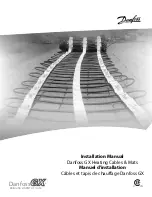
1.1 Personal Safety Warning Signs
2
1.0 Recommended Safety Precautions
The above safety warning signs indicate the risk of personal
injury or even death. IMPORTANT! Hot or moving parts can
cause serious injury and electric shock can kill. Use the
following MIG160 operation guidelines to insure your own
personal safety and for those in the immediate vicinity of
your work area.
1.2 Safety Precautions Preface
• The following are explanations of dangers present while
operating the machine. Please remind yourself and others of
these dangers.
• Only people who are trained professionally can install,
debug, operate, maintain and repair the equipment.
• NEVER TOUCH electrical parts
• Use dry, hole-free gloves and other protective safety gear
• Protect yourself from work and ground using dry
insulation. Make sure inulation is sufficiently covering
the working area.
• Use caution when working in confined spaces, in wet
environments or where falling is a risk
CLOTHING:
Suitable clothing must be worn to prevent excessive skin
exposure to UV radiation, sparks and molten metal. Flame-
proof, loose fitting cotton clothing buttoned to the neck,
protective leather gloves, spats, apron and steel toe safety
boots are also highly recommended. In addition, use a
helmet with the recommended shade lens for amperage
listed in the shade chart below.
FUMES AND GASES CAN BE DANGEROUS:
• Welding may produce fumes and gases hazardous to
health. Avoid breathing these fumes and gases. When
welding, keep your head out of the fume. Use enough
ventilation and/or exhaust at the arc to keep fumes and
gases away from the breathing zone. When welding with
electrodes which require special ventilation such as stainless
or hard facing or on lead or cadmium plated steel and other
metals or coatings which produce highly toxic fumes, keep
exposure as low as possible and below Threshold Limit
Values using local exhaust or mechanical ventilation. In
confined spaces or in some circumstances, outdoors, a
respirator may be required. Additional precautions are also
required when welding on galvanized steel.
• Do not weld in locations near chlorinated hydrocarbon
vapors coming from degreasing, cleaning or spraying
operations. The heat and rays of the arc can react with
solvent vapors to form phosgene, a highly toxic gas, and
other irritating products.
• Shielding gases used for arc welding can displace air and
cause injury or death. Always use enough ventilation,
especially in confined areas, to insure breathing air is safe.
• Read and understand the manufacturer’s instructions for
this equipment and the consumables to be used, including
the material safety data sheet and follow your employer’s
safety practices.
ARC RAYS CAN BURN:
• Use a shield with the proper filter and cover plates to
protect your eyes from sparks and the rays of the arc when
welding or observing open arc welding.
Less than 150 amps
150 to 250 amps
250 to 300
300 to 350
Over 350 amps
Use one shade darker for aluminium welding
Shade 9
Shade 10
Shade 11/12
Shade 13
Shade 14
ELECTRIC SHOCK CAN KILL!
160




































